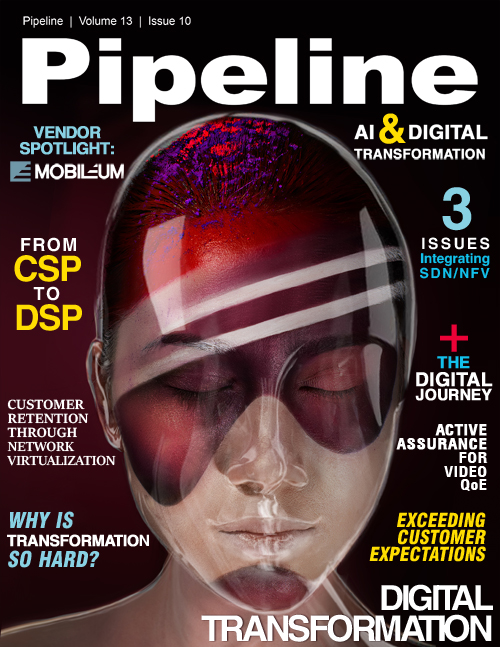CSP to DSP: More than a Name Change
The majority of businesses do not have the staff or skills required to integrate IT infrastructure, network infrastructure, applications, storage and data into a secure and reliable operational solution. For now, enterprises are forced to bundle offerings from a variety of sources on their own or use an expensive contractor and that complexity is slowing down the rate of adoption and restricting investment. Enterprises want to buy complex digital functionality as-a-service and any provider that offers it will win.
Connectivity is only a small part of the equation and DSPs need to go over the top and bundle offerings that incorporate all of the essential elements required to build and operate these services. Customers in general and business customers specifically, want a genuine service provider that removes the complexity, bundles the necessary elements into a service, and bills accordingly. While a majority of enterprises would prefer to buy this service from a DSP, they aren’t going to wait very long.
This Won’t Be Easy
Agility and automation are the key to digital services. Delivering that agility however, is fraught with challenges both internal and external to the business. Internally, service provider executives are still building a network that is capable of supporting digital services. After that, the biggest challenge is hiring and retaining people with the right mix of network and IT engineering skills as well as data scientists and sales engineers with knowledge of specific industries
Regulation and a lack of standards are predictable barriers to becoming a DSP, but those factors were of less concern to a majority of service providers than the availability of qualified partners. However, in defense of the partners, most service providers aren’t doing a very good job of supporting them.
Less than half of the CSPs surveyed provide application program interface (API) guidelines or open APIs, less than 40 percent provide an ecosystem to facilitate rapid on- and off-boarding of partners and 15 percent provide no support at all to their partners even though nearly 80 percent insist that partners are important to their DSP strategies.
In order for DSPs to differentiate themselves, transformation has to affect nearly every part of the business. Customer purchases will soon be based on the quality and variety of products and services being delivered, and the support provided. Partners will need to be rapidly on- and off-boarded using automated platforms and standardized interfaces. Integration will be the new mantra and DSPs need to position themselves to manage it all and ensure the quality and reliability that customers have come to expect.
Transformation is an expensive, painful and time-consuming effort that ultimately results in a new business culture. Cultural change takes time and constant reinforcement of consistent messages. The necessary changes will not happen overnight, but CSPs are transforming into the DSPs that will become trusted providers of digital services for years to come. As difficult as change is, waiting will only serve to make it more difficult in the future.
Start Now
DSP transformation represents a sea change for service providers and it is critical that each starts with foundational changes to business processes, IT systems, networks and even personnel. The motivation for making these foundational changes is split between revenue generation and cost management and the opportunities to both increase revenue and reduce costs while better serving customers are very real.
CSPs are in the unique position of being able to offer customers a vendor-neutral alternative to over-the-top providers. And they can leverage that position to monetize the trust they have earned and profit from delivering digital services that solve problems, improve productivity and generate revenue. Security and reliability are primary concerns and most competitors devote only a fraction of the time and resources spent by CSPs on security, technology refresh, support and operations.
When delivering the network delivered the product, managing the network ensured quality. While legacy infrastructure and services cannot be ignored, it also cannot be considered a barrier to transformation. Adapting and evolving existing infrastructure is necessary, but so is retiring aging infrastructure and OSS/BSS solutions that require more resources to maintain than to replace.
DSP business models, not just networks and operations, must undergo a transformation unlike any that we’ve ever witnessed. That means taking 100 years of experience, harvesting the important lessons and moving forward with new business and operating models.
Figures cited in this article are included in a 2016 study by ICT Intuition, LLC. Further information is available at ictintuition.com



















